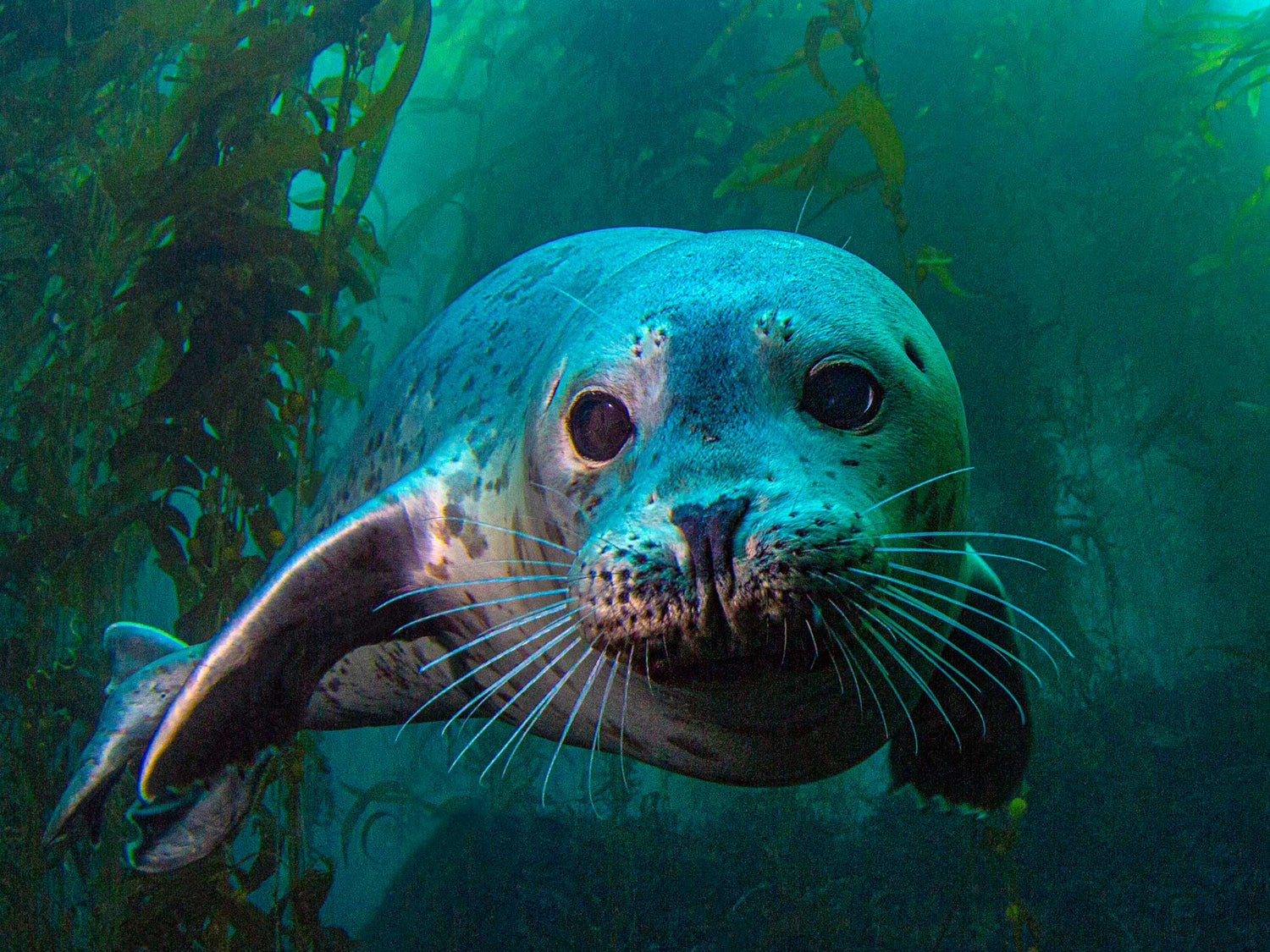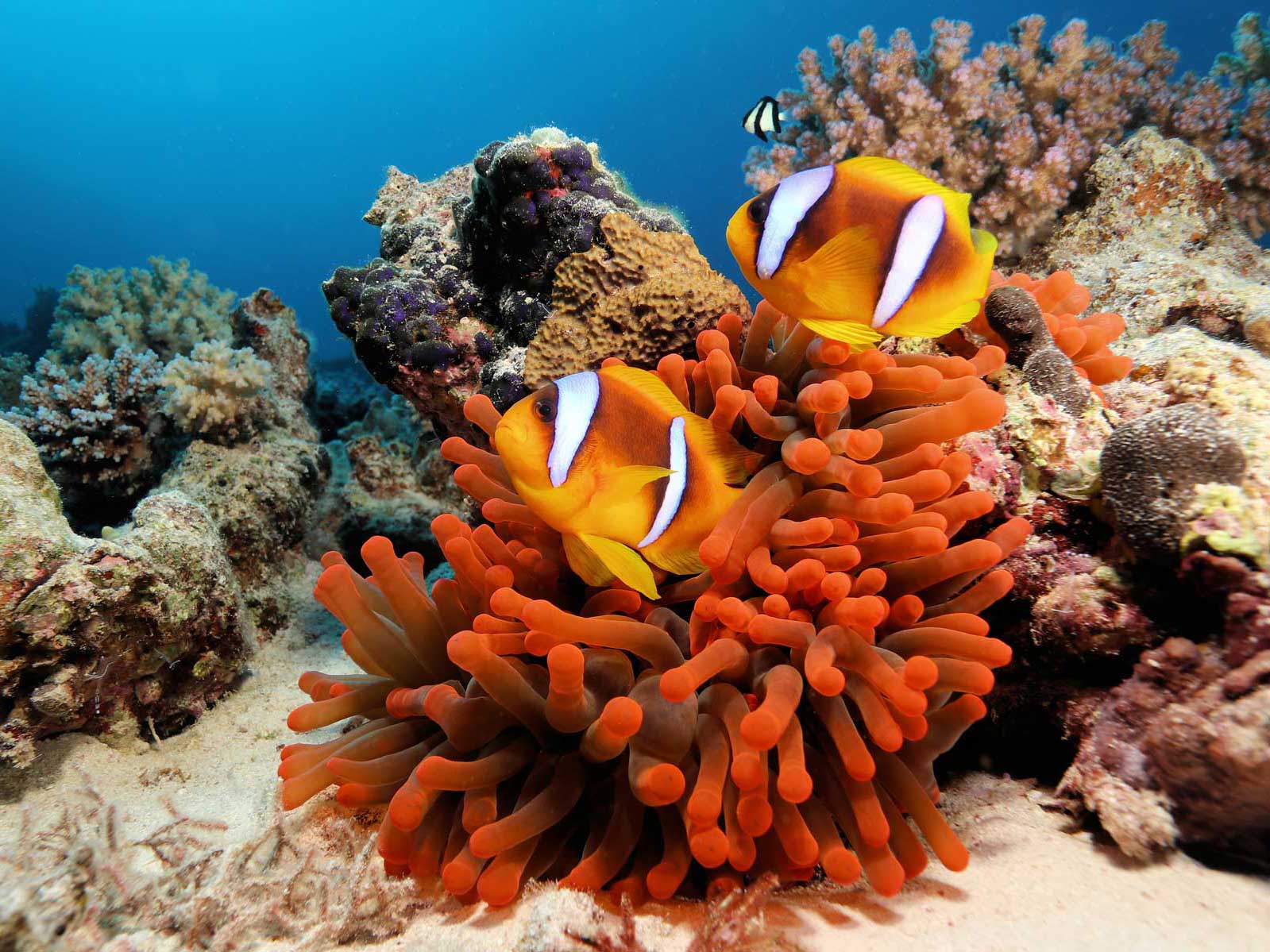Southern California’s kelp forests are home to a variety of marine mammals, like this harbor seal. These animals are curious and, for the lucky underwater photographer, will sometimes chose to interact with divers for 10-15 minutes without leaving.
Longtime Ikelite shooter Douglas Klug was kind enough to share this beautiful collection of photos taken in his backyard off the coast of Santa Barbara, California, as well as more exotic locations like Bonaire, Netherlands Antilles, and Moorea, French Polynesia.
Doug currently shoots a Canon EOS Rebel T4i (EOS 650D) in Ikelite housing with dual DS51 strobes. His favorite lenses for underwater shooting are the Tokina 10-17mm Fisheye, the Canon EF-S 60mm f/2.8 Macro, and the Canon EF 100mm f/2.8 Macro.
All photos Copyright © 2020 Douglas Klug

The bright orange garibaldi is California’s state marine fish. For the underwater photographer, they often complement the beauty of the underwater world, lit up by sunbeams cascading down through the kelp forest canopy.

Even when shooting macro, the kelp forests provide the underwater photographer with the opportunity for stunning images. The kelp bladders fall into random geometric shapes as they sway in the surge.

Anacapa Island in the Channel Islands National Park, California, USA, is home to some of the most spectacular kelp forests anywhere. When the combination of sunlight, clear water, and healthy kelp all line up, the underwater world is like a brilliantly lit cathedral and the possibilities for an underwater photographer are limitless.

There are almost 200 species of nudibranchs that inhabit the kelp forests and reefs of Southern California. The California Blue Dorid nudibranchs, pictured here, were thought to be nearly extinct from California waters during the 1990’s, but they re-appeared starting around 2015 and are now commonly found on reefs all around the Channel Islands.

Southern California’s two-spot octopus can often be found hiding in crevices on reefs around the Channel Islands. This one is a female guarding her clutch of eggs.

The water’s around the island of Bonaire are clear and warm. Many divers don’t ever realize that in addition to beautiful reefs, Bonaire has a host of small-animals that can be a delight for the underwater photographer. Here, a yellowface pikeblenny puts on a territorial display for it’s own reflection in a small mirror.

Seahorses are rarely found off the island of Moorea, but their closely related cousins, pipefish, are common in the shallows waters where they hide by blending in with the algae.

The beaches of Anacapa Island provide haul-outs for colonies of sea-lions. These curious and boisterous marine mammals will often swarm divers by the dozens, demonstrating their underwater acrobatics while playing like friendly sea-going puppy dogs!

California horn sharks are closely related to the Australian Port Jackson shark. They are harmless to humans and can often be found in the shallow kelp forests where they hunt small crustaceans on the reef. They are named for the two spines that protrude just in front of each of their dorsal fins.

Humpback whales come to the island of Moorea, in French Polynesia (Tahiti) to calf every fall. They can be seen by free-diving the warm, clear waters around the island.
Want to share your photos with the world? Email us 10-15 of your favorite photos along with captions and a short bio.
Additional Reading
Behind the Shot: Swirling Mobulas in Southern Baja Mexico
Planning a Trip to Photograph Manatees in Crystal River, Florida
Featured Photographer: Bryant Turffs on Looking Deeper
Shooting Florida Gators with Shawn Jackson












